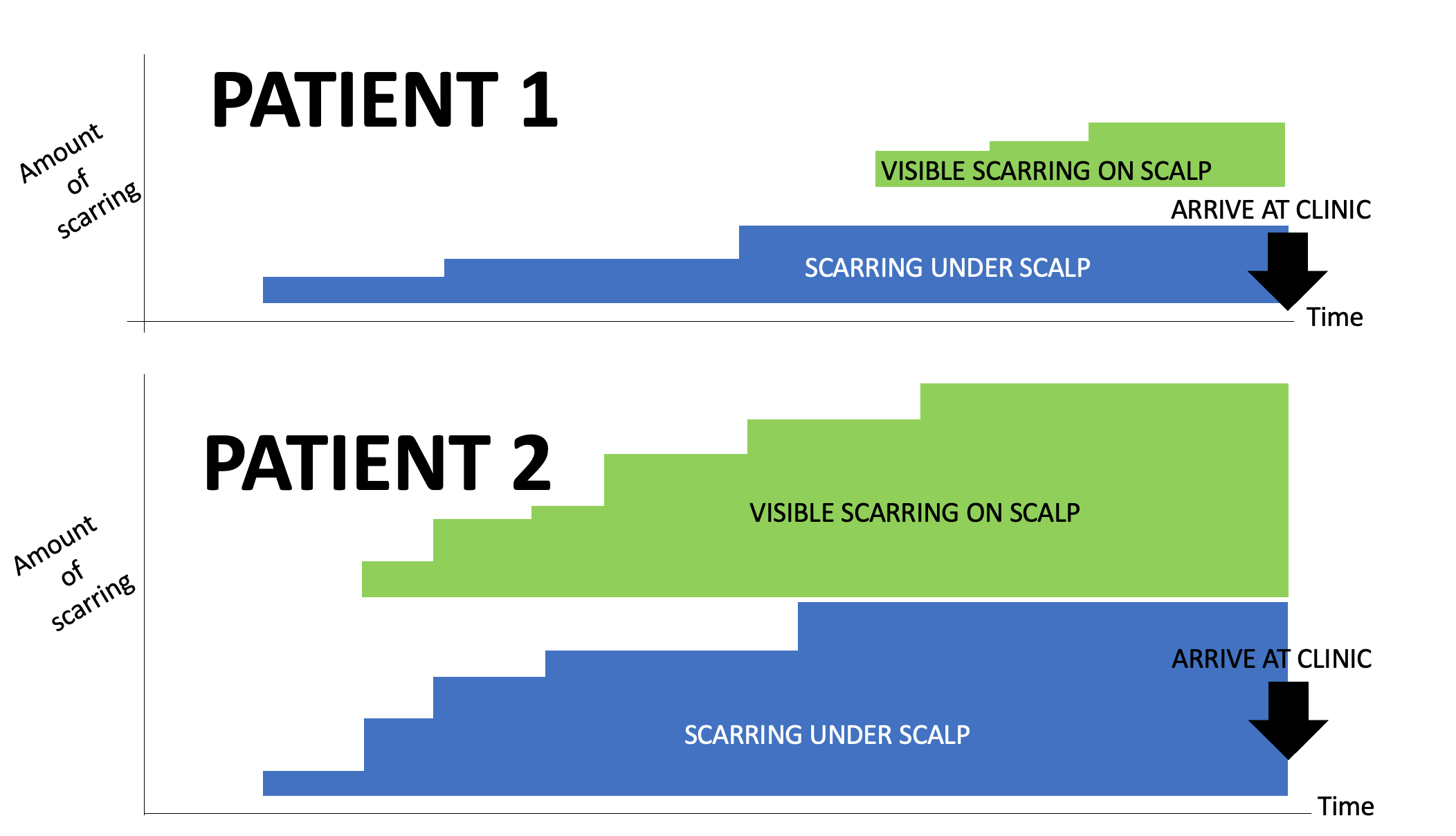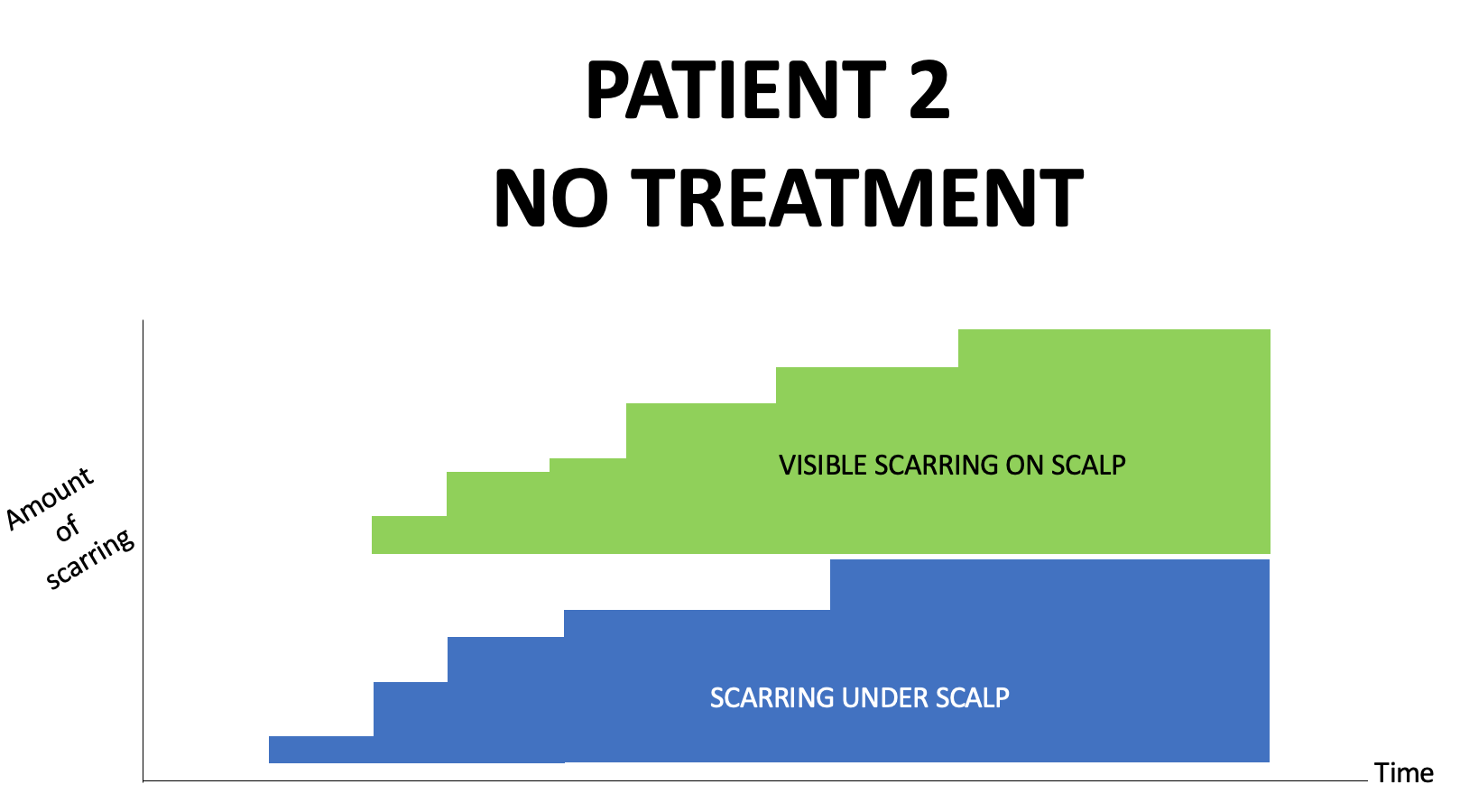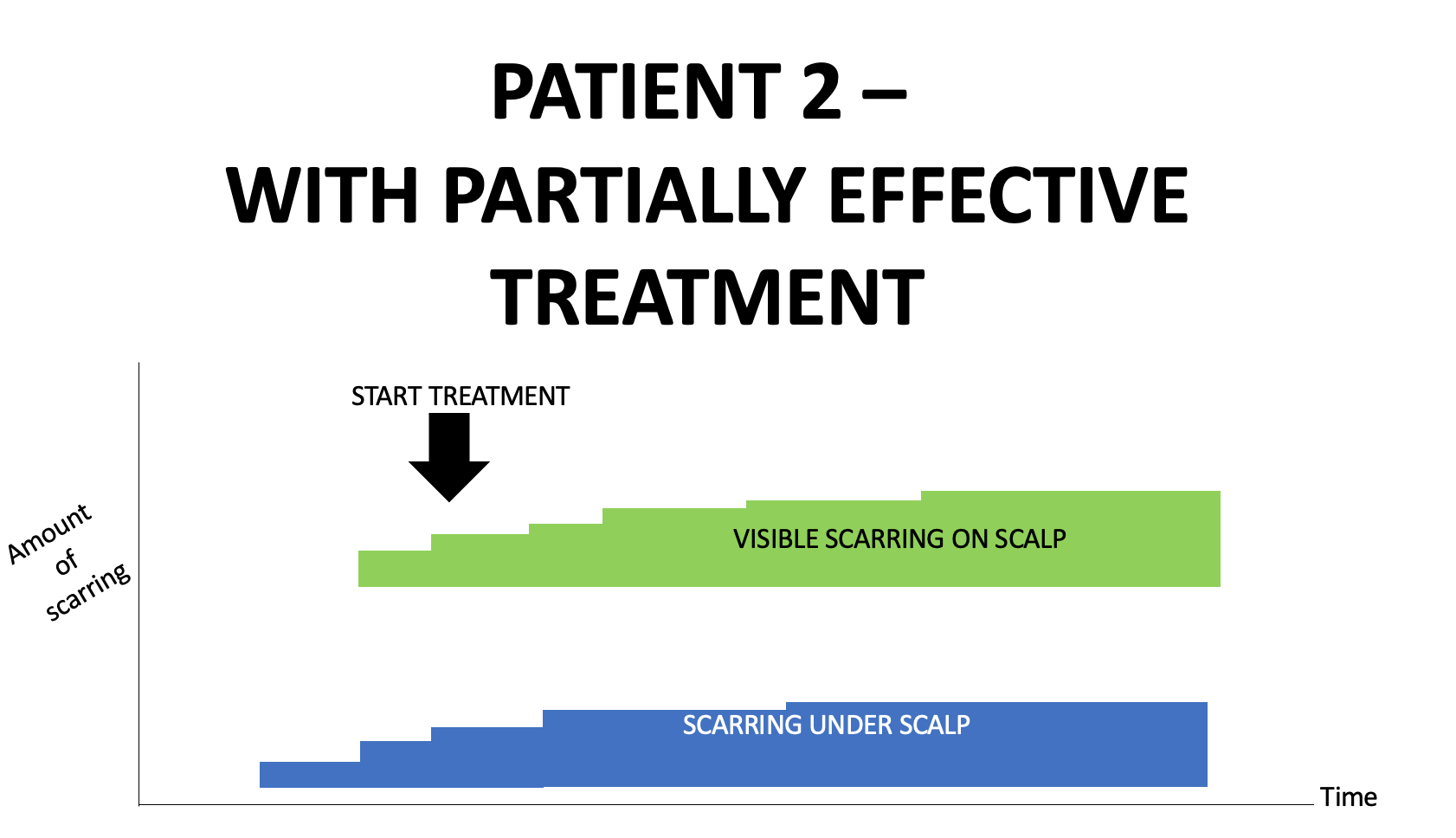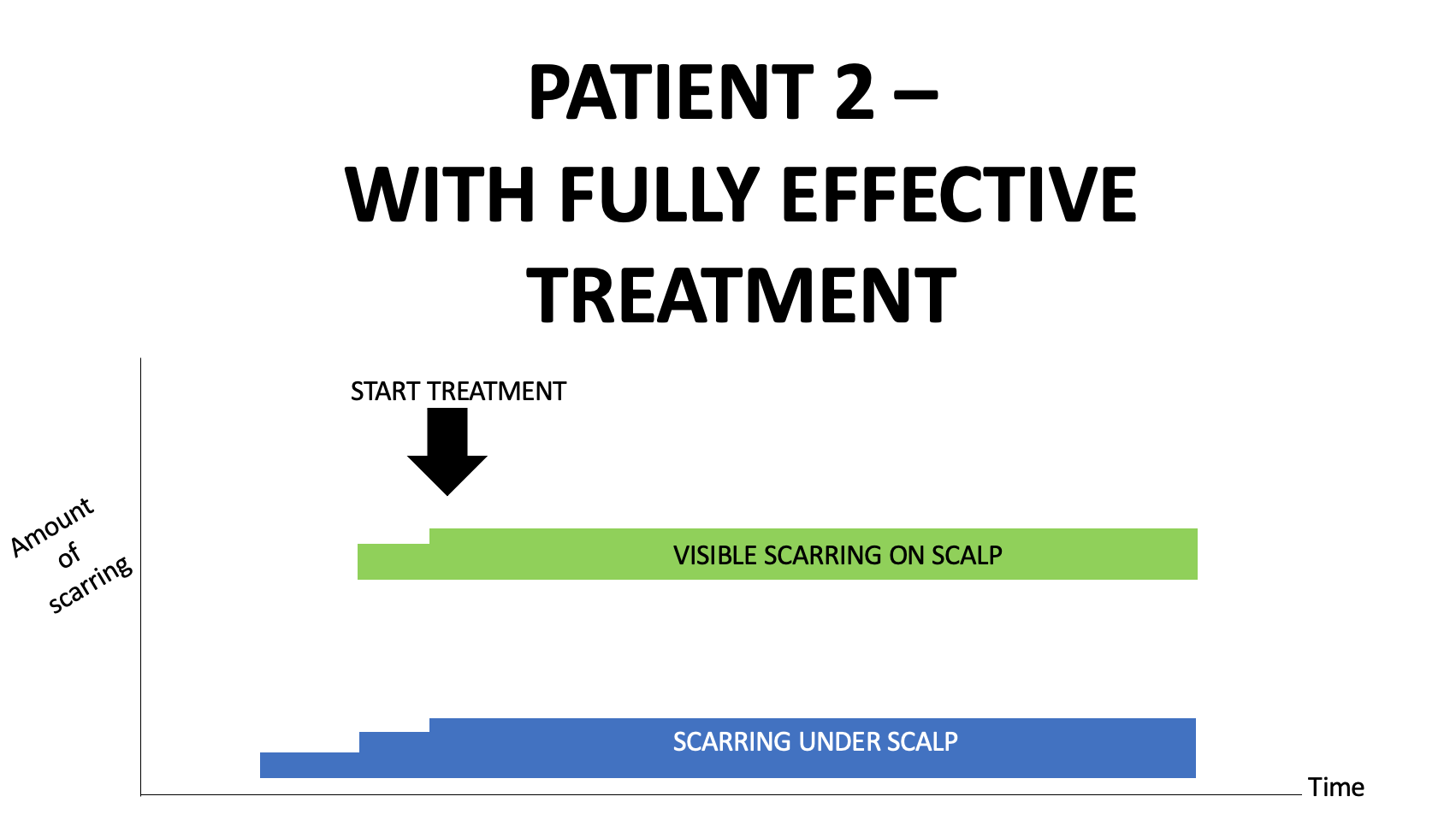How long does it take to develop visible scarring in a scarring alopecia?
Visible Scarring in Scarring Alopecia
I’ve selected this question below for this week’s question of the week. It allows us to review the great variability that exists in how quickly a scarring alopecia can progress to cause hair loss and visible scarring on the scalp.
Question
I would like to know how long it takes to develop visible scarring after someone gets a scarring alopecia ?
Answer
Thanks for the question.
The short answer is that it is quite variable. For some it’s many months but for others it may be years. Of course, treatment may stop the progression to visible scarring so the answer in that case would be never. Many things in humans are quite variable - especially immune conditions. Some are mild and some are aggressive. I have patients with LPP who were diagnosed 5-10 years ago and you would never know they have hair loss. They presented to clinic initially with rednesss and shedding and we were able to shut down the disease quickly.
Others develop visible scarred patches in a short time. Most people have had scarring alopecia quite a while before symptoms and hair loss start. It runs under the radar for a while - again quite variable in that duration.
Examples
EXAMPLE 1: VARIABILITY IN DISEASE ACTIVITY
Let’s take a look at example. Consider two patients with lichen planopilaris (LPP). Both arrive to the clinic 2 years after their lichen planopilaris presumably started. Patient 1 has a more mild form of the disease and patient 2 has a more aggressive form. In the diagram below you’ll note that patient 2 has more scarring under the scalp by the time they arrive at clinic and also more visible scarring on the surface of the scalp too. In the diagram, both the green and blue bars are taller
You’ll notice another important difference as well. Patient 1 only recently developed any kind of visible scarring on the surface of the scalp whereas patient 2 says she started developing spots of scarring alopecia very soon after the disease started.
This is quite typical of the variation that we see in lichen planopilaris. Some patients develop a rapidly progressive disease and others have a form of LPP that is much more mild.
EXAMPLE 2: VARIABILITY IN TREATMENT OUTCOMES
There can also be quite a difference in variability of how scarring alopecia responds to treatment. Let’s review what might happen to patient 2 under 3 different scenarios. Scenario 1 is the scenario we reviewed above already. The patient develops an aggressive form of scarring alopecia and develops scarring under the scalp and visible scarring on the surface soon after the disease starts:
Next, let’s consider the scenario whereby patient 2 starts treatment before coming to see you in the clinic. The treatment is partially effective for her but not totally effective. She still goes on to develop new patches and areas of loss but the amount of hair loss she develops and amount of scarring is dramatically less than if she did not use treatment.
Now finally, let’s assume that the patient (our Patient 2) decides to start treatment before coming in to see you in clinic and is highly responsive to the treatment. The result in this case is a stopping of further hair loss. You’ll note that the scarring is actually permanent so the size of the green and blue bars do not change. However, she does not go on to develop more and more scarring over time. The disease has been stopped by the use of treatment.
CONCLUSION
There is a great variation in how scarring alopecia behaves in humans. Some patients have an aggressive form of scarring alopecia that rapidly wants to cause hair loss and some have a more mild form that barely removes hair. Some forms are very responsive to treatment whereas others are more resistant.




